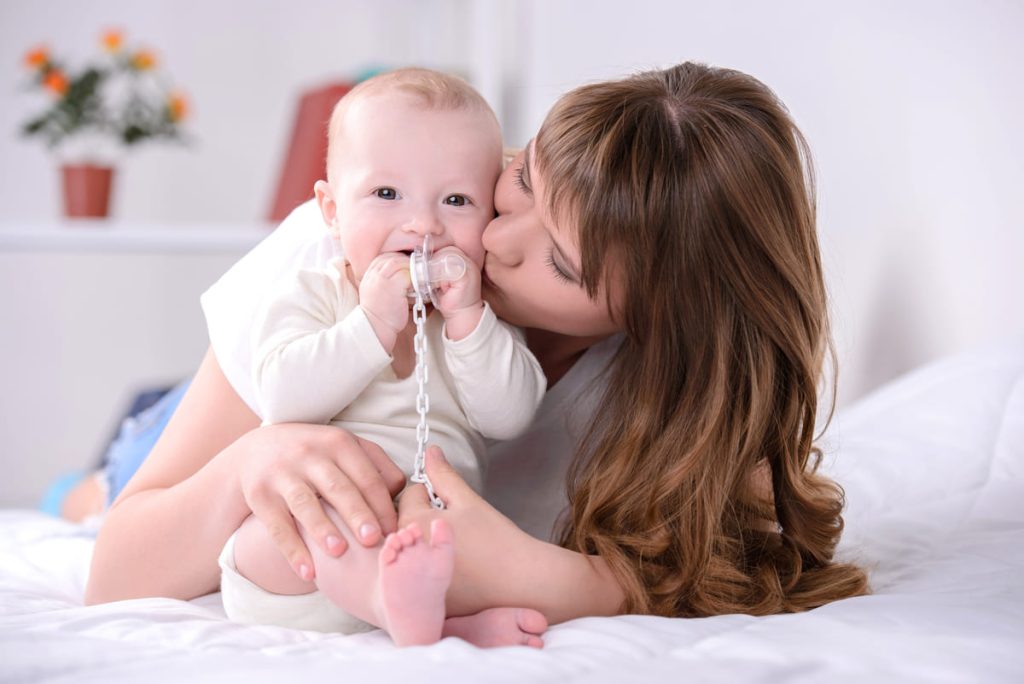News and Trending Events, Parenting
Paid Parental Leave: Impact on Child Development

The first few months and years of a child’s life shape their development and future success. During this crucial period, the presence and support of parents can have a profound impact on a child’s emotional, social, and cognitive growth. Yet, many parents find themselves torn between the demands of work and the needs of their new family. This is where paid parental leave steps in as a vital support system.
In this article, we will explore the various ways in which paid parental leave can significantly contribute to positive child development, drawing on the latest research and real-life examples to illustrate its far-reaching benefits.
Key Takeaways:
- Paid parental leave improves child development, including improved cognitive and social-emotional development, better overall health outcomes, and increased school readiness.
- Access to paid parental leave varies widely across countries and industries. Therefore, many families are unable to take advantage of this important policy.
- Parental leave is crucial for fostering child growth and providing families with the necessary support during the initial phases of life.
Understanding Paid Parental Leave
Understanding paid parental leave involves comprehending the policies and laws surrounding the provision of paid time off for new parents. This can include aspects such as the length of time provided, the amount of pay offered, and eligibility requirements. As well as that, it can also include any other conditions or limitations imposed by the employer or government.
Additionally, paid parental leave can benefit both parents and children. It can reduce financial stress and allow parents to focus on bonding with their children.
Research also indicates that paid parental leave can increase gender equality when fathers have more time to participate in childcare duties. Additionally, children may benefit from having more time with their parents during the critical early years of development.
What is Parental Leave?

Paid parental leave is a type of leave that allows new parents to take time off work to care for their children without losing their income. In recent years, this type of leave has become increasingly prevalent in the United States. Currently, several companies have established paid parental leave policies to support their employees during this life event.
What are the Laws and requirements?
- Family and Medical Leave Act (FMLA)
Family and Medical Leave Act (FMLA) is a federal law that grants employees 12 weeks of unpaid leave. FMLA focuses on certain family and medical reasons.
However, when someone refers to FMLA unpaid leave granted, they are referring to the approval or allowance of this type of leave for an eligible employee under the stipulations of the FMLA. An employee has the option to use their annual or sick leave to cover any portion of their unpaid FMLA leave.
- Federal Employee Paid Leave Act (FEPLA)
FEPLA is a law that provides employees with 12 weeks of paid parental. This leave follows the birth, adoption, or foster placement of a child. It applies to employees covered by Title 5 of the United States Code. Furthermore, its effectivity takes place last October 1, 2020.
To be eligible for FEPLA, federal employees must meet certain eligibility requirements, including:
- Being a federal employee who has been employed for at least 12 months
- Working a minimum of 1,250 hours during the 12 months preceding the start of the leave
Types of Paid Parental Leave
Let’s identify the different types of paid parental leave and understand how these policies impact families and society.
Maternity leave
This is paid parental leave granted specifically designed for mothers who have recently given birth. It gives them the opportunity to recuperate from childbirth and bond with their newborns.
Paternity leave
Fathers can utilize paternity leave, a paid leave option, to take time off work and provide support to their partners.
Adoption leave
For adoptive parents, adoption leave is a paid leave option that allows them to step away from work responsibilities and adjust to their new family dynamics.
Other types of leaves
Foster Care Leave: This type of leave is specifically for parents who have welcomed a new foster child into their home. This is also available for caregivers of military families who are participating in a qualifying event related to a family member’s military deployment to a foreign country.
Family and Medical Leave: Under the Family and Medical Leave Act (FMLA), eligible employees can take up to 12 weeks of unpaid leave. This leave can be used to care for a new foster child or to recover from a serious health condition.
Temporary Disability Insurance: For those unable to work due to temporary disability, Temporary Disability Insurance provides paid leave.
Impacts of Paid Parental Leave on Child Development
Paid parental leave has been shown to have a positive impact on child development, particularly for young children. This increased time spent with children can lead to improved learning and educational attainment later in life.
When parents have access to paid leave, they can spend more time with their children during the early years of development.
Benefits to Child Health and Care
One important aspect of child development that is positively impacted by paid parental leave is child care.
- Paid leave provides parents with the opportunity to take time off work to care for their infants.
- This can result in better infant health outcomes and a reduction in child mortality rates.
- Additionally, parents can ensure their children receive necessary well-baby check-ups and timely immunizations, contributing to long-term health benefits.
Contribution to Gender Equality
In addition to the health benefits, paid parental leave can also lead to increased gender equality when fathers can take time off work.
- When fathers take paternity leave, it can contribute to a more balanced distribution of childcare responsibilities.
- It provides children with strong male role models and increases parental care and engagement.
Influence of Paid Parental Leave on Health Outcomes

Paid parental leave has been demonstrated to significantly improve health outcomes for mothers and infants when taken for birth or placement purposes.
Research suggests that paid parental leave policies can increase the duration of breastfeeding. Moreover, it has been linked to various health benefits for infants. This includes a reduced risk of infections, sudden infant death syndrome (SIDS), and obesity.
Reduction in Infant Mortality Rates
In addition, studies have found that paid parental leave is associated with lower infant mortality rates. For example, a literature review found that paid parental leave across national income levels has been associated with:
- Lower infant mortality
- Higher rates of immunizations
Positive Outcomes for Maternal Health
Paid parental leave can also have positive effects on maternal health outcomes. This leave can provide mothers with the time and resources needed to recover from childbirth.
One study found that women who had access to paid parental leave were less likely to experience postpartum depression.
Support for Exclusive Breastfeeding
According to the World Health Organization, exclusive breastfeeding is recommended for the first six months of an infant’s life. It has been shown to have numerous health benefits for both mother and child. This leave provides essential time and support to mothers, assisting them in initiating and sustaining exclusive breastfeeding.
Paid Parental Leave and Labor Force Participation
In countries where paid parental leave policies are in place, women are more likely to return to work after having a child. This is due to the financial support that paid parental leave offers families while caring for a new child.
Studies have shown that women who have access to paid parental leave are more likely to return to work within a year of giving birth.
Paid Leave on Women’s Return to the Workforce
- When women participate in the labor force, they contribute to the economy and increase the overall productivity of the workforce.
- Paid parental leave can help to reduce the gender wage gap and improve labor market outcomes for women.
- It can benefit working women who are caring for elderly parents or family members with disabilities.
Effects of Unpaid Leave on Women’s Financial Stability
When women take time off to care for a new child without pay, they are more likely to experience a reduction in their earnings and job opportunities. This can have long-term effects on their career and financial stability.
Without paid leave, these women may have to choose between caring for their family members and maintaining their employment. Therefore, this can lead to a loss of income and job security.
Economic Security and Paid Parental Leave

When a parent has access to paid leave, they can take time off from work to care for a newborn. Hence, they can also arrange child care for their adopted child without the stress of losing a paycheck.
Research has shown that paid leave policies can help reduce the risk of financial hardship and poverty.
For instance, a study revealed that many families filing for bankruptcy had missed over two weeks of work due to illness or care giving duties, situations addressed by paid family and medical leave policies.
In addition to its benefits for families, paid parental leave can also have positive effects on businesses and the economy as a whole. When employees can take the time necessary to care for their families, they are more likely to be engaged and productive when they return to work. This can lead to higher employee satisfaction and retention, which can be beneficial for businesses in the long run.
What is The Importance of Adequate Wage Replacement Rates?
- Adequate wage replacement ensures sufficient income during leave, which is crucial for low-wage workers.
- It provides economic security when families face increased child-related expenses.
- Adequate wage replacement supports equitable access to paid leave benefits.
- It’s vital for preventing financial hardship and supporting family well-being.
In consequence, a low wage replacement rate may discourage workers from taking the necessary time off to care for a new child or ill family member, which can have adverse effects on health and family bonding.
Paid Parental Leave and Family Policies
Paid parental leave policies have been gaining momentum worldwide as a way to support families during a crucial period of their lives.
Studies have found that this program has positively affected both parents and children, including increased breastfeeding rates, improved infant health outcomes, and reduced maternal depression.
Family policies, including paid parental leave, are an investment in the well-being and future success of children, as well as in the strength and stability of society as a whole.
- As mentioned earlier, breastfeeding can improve the health outcomes of infants.
- Additionally, paid parental leave can help parents bond with their children and provide a supportive environment for their development.
California’s paid family leave program is a notable example of a public policy that provides paid parental leave to eligible workers. The program offers up to eight weeks of paid leave to care for a new child or a seriously ill family member.
Here is a summary of family leave programs by state.
| State | Family Leave Program |
|---|---|
| California | Paid Family Leave (PFL), State Disability Insurance (SDI) |
| New York | Paid Family Leave (PFL) as part of Paid Family and Medical Leave (PFML) |
| Washington | Paid Family and Medical Leave (PFML) |
| New Jersey | Paid Family Leave (PFL), State Disability Insurance (SDI) |
| Rhode Island | Paid Family Leave (PFL) |
| Other States | Unpaid leave under the federal Family and Medical Leave Act (FMLA) |
Societal Perceptions and Stigma Surrounding Paid Parental Leave
Despite the numerous benefits of paid parental leave, there are still societal perceptions and stigmas that surround it. These perceptions and stigmas can have a significant impact on how parents and employers view the importance of paid parental leave.
1. Motherhood Stigma
One of the main stigmas surrounding paid parental leave is that it is mainly for mothers. This gender norm can perpetuate the idea that mothers are the primary caregivers and fathers are not as involved in child-rearing. Therefore, it is important to recognize the importance of paid parental leave for both mothers and fathers.
However, research has shown that fathers’ involvement in child-rearing can have significant benefits for both the child and the family unit.
2. Perceived Necessity
Another stigma surrounding paid parental leave is that it is a luxury and not a necessity. This perception can lead to employers not offering paid parental leave or employees not taking advantage of it.
Additionally, employees may feel pressured not to take advantage of parental leave or to return to work sooner than they would like out of fear of losing their job or facing other negative consequences.
3. Gender Equity
Furthermore, the lack of gender equity in paid parental leave policies can also perpetuate stigmas and gender norms. For example, if fathers are not offered the same amount of paid parental leave as mothers, it can reinforce the idea that mothers are the primary caregivers and fathers are not as involved in child-rearing.
Access to Paid Parental Leave
Despite its importance, access to paid parental leave varies widely around the world and even within countries, often depending on factors such as the individual’s employer, occupation, and location. Some countries have comprehensive national policies that provide paid parental leave for both mothers and fathers, while others rely on employers to offer these benefits voluntarily.
Here are key points to consider about access to paid parental leave:
Global Disparities
Paid parental leave policies vary significantly from one country to another, with some countries providing extensive leave benefits while others offer minimal or no paid leave.
For example, countries like Sweden and Norway offer generous paid parental leave policies, while the United States does not have a comprehensive national policy mandating paid parental leave.
Employer-Based Policies
In some countries, paid parental leave is primarily provided through employer-based policies as part of their employee’s health insurance coverage. This means that access to paid leave can be inconsistent and often depends on where an individual works. Some employers may offer generous leave benefits, while others may not offer any paid leave at all.
Legal Protections
Lastly, some countries have enacted laws to protect the rights of parents to take leave and receive some form of income during that time. These legal protections are essential to ensuring that parents can take the time they need to care for their children without facing financial hardship or job loss.
Frequently Asked Questions
What are the benefits of paternity leave?
Paternity leave allows fathers to bond with their newborns and support their partners during the postpartum period. Fathers who take paternity leave are more likely to be involved in their children’s lives in the long term.
What are the negative effects of not having paid parental leave?
Some negative effects of not having paid parental leave can lead to:
- Financial strain
- Stress
- Reduced job security for new parents
It can also result in mothers returning to work too soon after giving birth, which can negatively impact their health and the health of their babies.
How does paid parental leave impact work-life balance?
Paid parental leave can help new parents balance the demands of work and family by providing them with time off to care for their children. Such benefits include:
- Improved job satisfaction
- Productivity
- Better mental health and well-being
What are the pros and cons of paid maternity leave?
The pros of paid maternity leave include improved maternal and child health outcomes, increased gender equality, and improved work-life balance for new mothers.
On the other hand, the cons include potential costs to employers and taxpayers, as well as concerns about gender discrimination in the workplace.
Why is parental leave important for child development?
Parental leave allows parents to bond with their newborns and provide them with the care and attention they need during their early months of life. It can lead to improved cognitive and social development in children, as well as better mental health outcomes for mothers.
Final Thoughts – Make the most of your paid parental leave
As individuals, we must take full advantage of paid parental leave benefits when they are available to us. This time off from work is not simply a break; it is a valuable opportunity to bond with our children, support our partners, and lay the groundwork for a strong and supportive family unit.
Ultimately, the impacts and importance of paid parental leave cannot be overstated. Paid parental leave concludes as a critical policy that plays a fundamental role in shaping the future of our society. Let us all commit to advocating for and supporting the expansion and improvement of paid parental leave policies, both within our communities and on a broader scale, to ensure that every family has the support they need to thrive.
